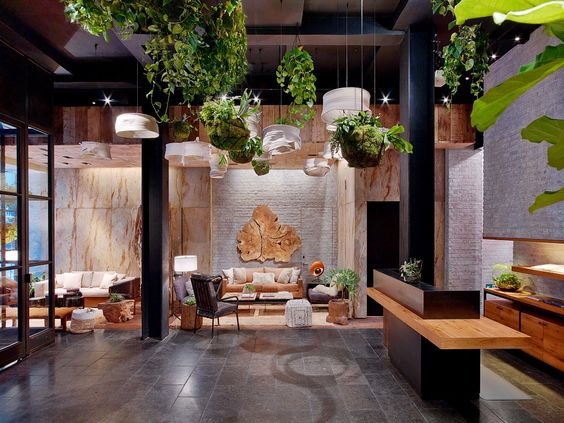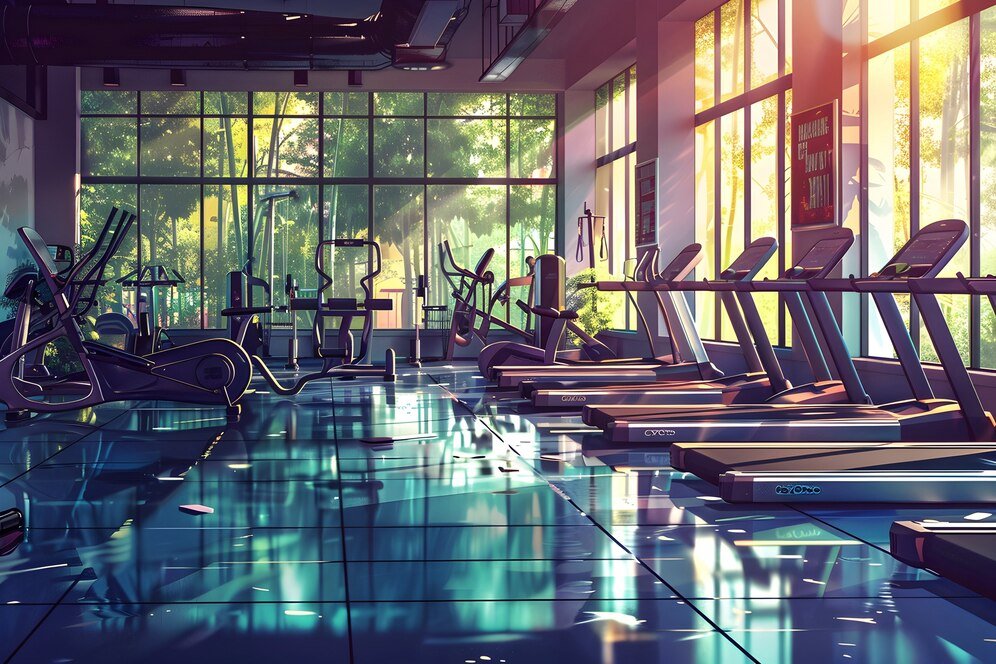Top Trends in Hospitality Design for 2024
The hospitality industry has always tuned to changes in culture, society, and technology. In 2024, hospitality design mainly focuses on improving the guest experience, being more eco-friendly, and using new technology. Whether it is a hotel or resort, these places will put more effort into meeting the requirements of today’s travelers. Following eco-friendly ways of offering exclusive digital experiences, the trends shaping hospitality design in 2024 aim to create comfortable, sustainable, and tech-fluent spaces for modern guests.

Here are some Top 7 Trends in Hospitality Design for 2024
Let us dive into these seven key trends in Hospitality Design and see how they are transforming the hospitality industry.
1. Eco-Friendly Design:

Hotels or Resorts are turning to environmentally friendly materials like reused wood, bamboo, cork, or restored metals. These materials not only cut down the overall carbon emissions of the construction but also create a different vibe that appeals to eco-minded tourists. Natural and locally sourced materials are the main elements in this trend. Saving water is still a main important part of hospitality design. More hotels are using water-conserving faucets and shower sprayers, along with systems that recycle water for other uses. Collecting the rainwater and using plants that require only less water are also helping to save water. Hotels and Resorts are creating spaces that use less water, which is good for the environment, and invites guests who care about being eco-friendly.
2. Bringing Nature Indoors:

Living walls, which are like plant walls, are becoming in trend in hotel lobbies or restaurants. These green wall features not only look elegant but also help to better the air inside and make the space feel calm. Outdoor areas, such as rooftop gardens, and terraces with regional plants, are also in trend. Another main part of design that connects people with nature is more and more use of sunlight. Hotels are adding large windows and skylights to let in lots of sunlight. This limits the use of artificial lighting and makes the indoor spaces radiant and attracts more guests. Using soft fabric material curtains and glass walls also helps create a feeling of openness and a better connection to the outside.
3. Waste Reduction Strategies:

Designers in the hospitality industry are becoming more creative in finding ways to overcome waste. One valid method is setting up an organic waste system to manage food waste from restaurants and kitchens. This helps turn leftover waste into nutrient-rich fertilizer instead of sending them to garbage. Their other main focus is to trim single-use plastics. Many hotels and restaurants are choosing multi-use options, for example- glass water bottles and metal straws, which not only cut down on plastic waste but also enhance the guest experience.
4. Keeping Your Information Safe:
As technology becomes a bigger part of the hospitality experience, protecting digital privacy is very vital. Guests share a lot of personal information when they book rooms, use hotel apps, or connect to Wi-Fi. To keep this data locked, hotels are focusing on better cybersecurity measures. This means using strong passwords, encryption, and firewalls to protect guests from hackers. By focusing on digital privacy, hotels focus on building trust with their guests, making them feel safe and secure during their stay. This guarantee of privacy not only safe guests but also boosts their overall experience at the hotel.
5. Business Services:

Hotels are targeting upgrading their business services which support the guests who work online. Many hotels are giving multiple services to make it basic for business travelers. For example- printing services allow guests to rapidly print documents or boarding passes without leaving the hotel. Conference rooms are also becoming more common, providing a professional space for meetings or presentations. These rooms have updated technology like- projectors and video conferencing equipment, which will make an easier for guests to connect with people and clients.
6. Balance and Health-Focused Design:

Hotels are focusing on wellness and health in their designs, adding features like- fitness centers, spas, and meditation spaces. In 2024, the wellness trend expands, with spaces designed to promote relaxation and refreshing energy. Guest rooms are designed for better sleep, adding sound-reducing features, sun-blocking curtains, comfortable beds, and temperature control. Some hotels provide “sleep programs” with essential oil therapy and meditation for relaxing sleep. Dining options are also health-focused, giving nutritious, organic, and locally farmed food. Juice bars and locally farmed food provide fresh, healthy options for guests who value their health while on trips.
7. Advanced Technology in Smart Rooms:
In 2024, technology is shifting the guest experience, with “smart rooms” becoming more popular.
Smart Room Features: Smart rooms allow guests to control multiple features of their room, such as lighting, temperature, and entertainment, using their smartphones or voice-activated devices. These rooms offer a personalized approach, allowing guests to design their experience to meet their interests.
For example, guests can adjust the room temperature before they even arrive or use a mobile application to request room service. Voice-controlled assistants like- Amazon Alexa, and Google Assistant are also becoming more common in hotel rooms, allowing guests to easily control their environment with simple voice commands.
Summary
In 2024, hospitality design targeted creating spaces that are good for the environment, use technology, and boost health. Hotels are using these trends to provide better experiences for their guests while meeting the needs of today’s travelers. Fitness is also important, with designs that promote relaxation and health, such as wellness rooms and spaces for yoga or meditation.
So, hotels are making flexible areas that can be used for diverse purposes, regardless it’s a comfy space for reading or a space for meetings. By staying ahead of these trends, hotels and resorts can continue to attract a wide range of guests, providing them with memorable experiences. The future of hospitality design is bright, with innovations that prioritize the environment, health, and technological convenience.

